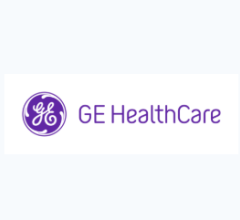
When patients feel relaxed, they will lie still during the scanning process.
The need to repeat even one scan can put you behind schedule, increasing patient wait times and staff overtime. Today more than ever, first time right imaging is key. The Philips Ingenia platform delivers fast, robust scanning methods based on dStream digital quality and speed, along with Premium IQ* (*Premium IQ is defined as image quality obtained with dStream compared to Achieva) for more information in the same time slot. With our Patient In-bore Solution we have innovated patient experience during the MRI exam.
Patient experience is a crucial factor for the successful operation of a radiology department. To that end, Herlev Gentofte University Hospital (Denmark) has added the Patient In-bore Solution to its Ingenia 3.0T system. Patients are positive and the MRI staff sees these features help calm patients, reducing motion-related problems and providing excellent images.
Focus on the Patient’s Experience to Benefit Robust Imaging
Michel Christian Nèmery, M.D., is chairman of the Department of Radiology at Herlev Hospital. “Patient satisfaction is very important to us. In our country discussions on including patient experience into reimbursement models are currently ongoing,” he said. “We’re trying to move away from being a ‘disease repair shop’ to being a ‘temple of health,’ as I sometimes call it. The MR suite with the Ambient Experience and the In-bore Solution is a substantial element in that change.
“We have the full Ambient Experience and Patient In-bore Solution on our Ingenia 3.0T,” he continued. “We’re also trying to improve waiting areas and the reception area. We’ve asked our patients to choose wall pictures, and we’re doing a fairly extensive remake with special lighting and the Luminous Textiles technology from Philips.”
Nèmery said the staff members feel good doing their job in this appealing environment. “They understand that it’s important for patients to be treated with respect and attention,” he said. “Most important, they realize that a comfortable patient is key for a successful scan. An uncomfortable patient is likely to move and cause artifacts in MR images, so that a scan needs to be repeated. So our attention for patient experience is also meant to benefit image quality and even our efficiency.”
Helping Patients Feel Comfortable in MRI
Nèmery described what a patient experiences in the Ingenia 3.0T suite: “Already in the preparation room, MRI patients design their own scan experience. Via an iPad mounted on the wall, the patient can choose a theme for the Ambient and In-bore experience. Then as the door opens they enter the scanner room, which shows, for example, an underwater theme. Patients are typically surprised and our techs are pretty clear that this gives them something to talk about while handling the patient; it often is a ‘concern-breaker.’ ”
Patient experience and department efficiency go together. Nèmery and his team conducted a survey of patients who were scanned with the In-bore Solution. “They said it’s lovely, calming and a positive distraction,” he stated. “About 30 percent said time went by quickly. In the short time we’ve been using the In-bore Solution, our patients who underwent scanning before on other systems have said adding the Inbore Solution gave them a positive experience.
“My sincere impression is that we do reduce patient motion, we reduce cancellations, and we do reduce repeat sequences and non-completed studies. So you could say it also improves on our efficiency,” he continued.
Studies Show Fantastic Results
Radiographer Jeanette Brus Mortensen confirms these findings. “We get very positive feedback from our patients,” she said. “They say that it is calming and has a relaxing effect. Our patients feeling somewhat anxious become focused on something other than the fact that they are lying in a scanner. Our patient survey shows that over 90 percent of the patients indicated to have a better or much better comfort level with their in-bore experience.
“Most important, feeling relaxed helps patients lie still during the scanning, which helps reduce motion in images,” she continued. “This helps in diagnosis and reduces the amount of times we have to retake shaken sequences. Our data demonstrate a significantly reduced number of interrupted scans (rescans) in the scanner room where the Patient In-bore Solution is installed — which directly contributes to a more predictable throughput. We compared the number of interrupted examinations before and after installation of the In-bore Solution and between the six scanners. These data show a significant reduction of interrupted exams from the Ingenia 3.0T scanner with the In-bore Solution.”
A Differentiator for the Hospital
The focus on patient experience has helped the Herlev Hospital Department of Radiology to differentiate itself from others in the region. “For us, there’s no question that it adds value,” Nèmery said. “Previously we could only try to comfort patients and cut down exams to go quickly. Now, the In-bore Solution introduces an element of surprise that generates an opportunity to break a train of thoughts, to distract patients in a good way, and help the techs handle the patients with care and give them a good experience. It enables patients to be active participants in their imaging by empowering them to design their own scan experience.
“This has a huge effect on our department,” he concluded. “If we manage to reduce patient motion with the In-bore Solution, we also reduce repeat scans, waiting times, rescheduling and staff overtime. It helps us be more efficient while getting the high quality images we need.”
Case study supplied by Philips.



 April 10, 2025
April 10, 2025 








